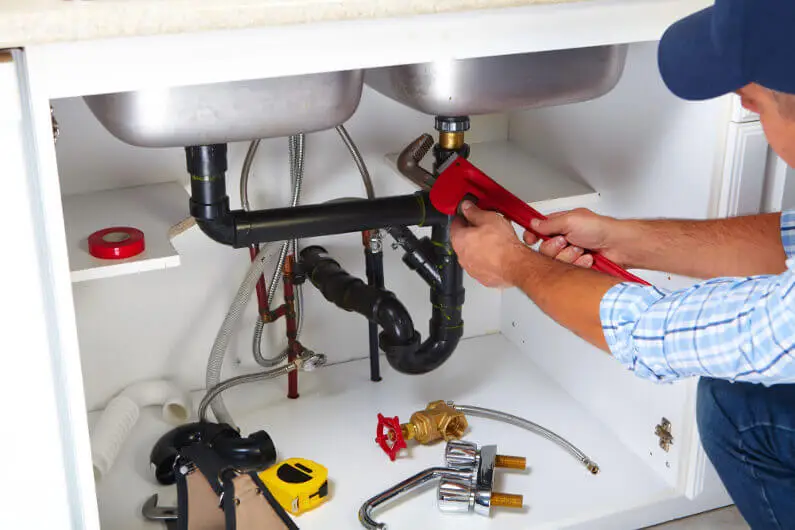
Older homes charm the socks off of many homebuyers. The architecture both inside and out brings back memories of the good old days. Further, many older homes come with better bones than some newly built houses.
If you fell in love with an old house, you may have overlooked a few things that could cause future problems, like old pipes.
Outdated electrical systems and furnaces likely didn’t make it past your home inspector’s eyes. But old pipes may have.
Read today’s post for tips on what you can do about old plumbing.
How to Determine the Age of Old Metal Pipes
Unless you’re the original owner of your home, you may not know the exact age of your plumbing system.
When you buy a home, you should get a seller’s disclosure. Sometimes, you’ll find information there about the age of the plumbing. Your home inspector may offer an opinion as well.
If not, take a minute and locate the exposed plumbing in your home. Look at the water supply and sewer pipes (pressurized), as well as the non-pressurized pipes, which you’ll find under the sinks.
If you live in a house built before 1975, you may discover cast iron pipes. Homes built before 1960, may still have galvanized steel pipes. Both materials have a lifespan of around 30-40 years.
Plumbers started installing copper piping in homes during the 1930s. The use of this sturdy material grew in the 1960s. Today, all homes should have copper and plastic pipes.
What Is the Big Deal about Old Pipes?
If you’ve lived in your home free of significant plumbing problems, you may wonder why plumbers are concerned about old pipes.
Over the years, plumbing codes have changed, which means pipes installed in older homes may not be up to local and national building codes. Age is associated with more than the useful life of your plumbing. Materials used years ago may not be safe today.
For example, galvanized pipes installed in homes between 1880 and 1960 contained lead and other harmful substances. If they are connected to lead plumbing, the danger increases.
Aside from health concerns, galvanized pipes are prone to corrosion and rust, which usually result in low water pressure, uneven water distribution, rusty-looking water, and leaks.
Cast iron pipes, while durable, do fail over time. They can develop rust, which slows water drainage. Tree roots and cast iron do not make good partners.
If you find galvanized or cast-iron pipes in your home, don’t panic, and don’t start tearing out the plumbing. Call your plumbing professional to come out and inspect the system, so that they can offer you the best solution.
What to Do with Old Pipes in Your House
Once your plumber inspects your old pipes, they may suggest replacing one pipe section or the entire system. While age is a factor, poor maintenance, and hard water also play a role in how long pipes last.
If you have galvanized pipes, especially if there’s a chance they were ever connected to lead service lines, your plumber may recommend replacement.
Unlike lead pipes, cast iron doesn’t pose any inherent threats to your health. However, when cast iron comes to the end of its lifespan, it’s susceptible to rust and other damage.
When you notice the following issues, it’s time to consider pipe repair or replacement:
- Discolored Water
- Leaks
- Slow Drainage
- Frequent Plumbing Backups
- Mold in Your Home
- Sewer Gas Odor
Another sign of a pipe problem is an unusually healthy lawn. Sewage, while not good for humans, makes a great lawn fertilizer. If you notice an area that's greener than others, you may have a cracked pipe.
How to Care for Old Water Pipes
Maybe you’re not ready to tackle a complete replacement of your plumbing system. Instead, you can take measures to extend the life of your old pipes.
First, be careful about what you put down the drain.
Since clogged pipes are common issues in older homes, it’s tempting to use chemical drain cleaners to clear the clog. The high acidity levels in drain cleaners can accelerate deterioration in old metal pipes. If you can’t clear a clog with a plunger, a store-bought enzyme, or a mixture of baking soda and vinegar, call the plumber.
Ideally, you should replace galvanized pipes, but if you can’t manage an immediate replacement, you can prolong their life by cleaning the rust from the outside of the pipes. Steel wool and vinegar will get rid of small areas of rust. For heavy rust or corrosion inside the pipes, you’ll need help from a professional plumber.
If your old pipes are leaking, try sealing holes and cracks with a plumber’s putty or pipe repair tape. It’s not a long-term fix, but it may give you a little more time to prepare for replacement.
What Do Plumbers Use to Replace Old Piping?
We’ve already mentioned copper piping, and if you don’t already have it in place, your plumber will likely suggest using it if you need water lines replaced.
In new homes today, plumbers use PVC plumbing pipes. PVC doesn’t rust or corrode. If you’re replacing galvanized or cast-iron pipes, PVC is a superior material.
Ready for a Pipe Replacement?
Whether you have galvanized or cast-iron plumbing, if you and your plumber determine it’s time for a replacement, you may have the option of replacing a section or the entire system.
Consider a complete replacement of the old pipes, if possible. Replacing all the pipes at the same time will save time and money.
If you’re ready for pipe replacement, or you have other plumbing issues, we’re here to help. Contact our team today for an estimate for plumbing services.

